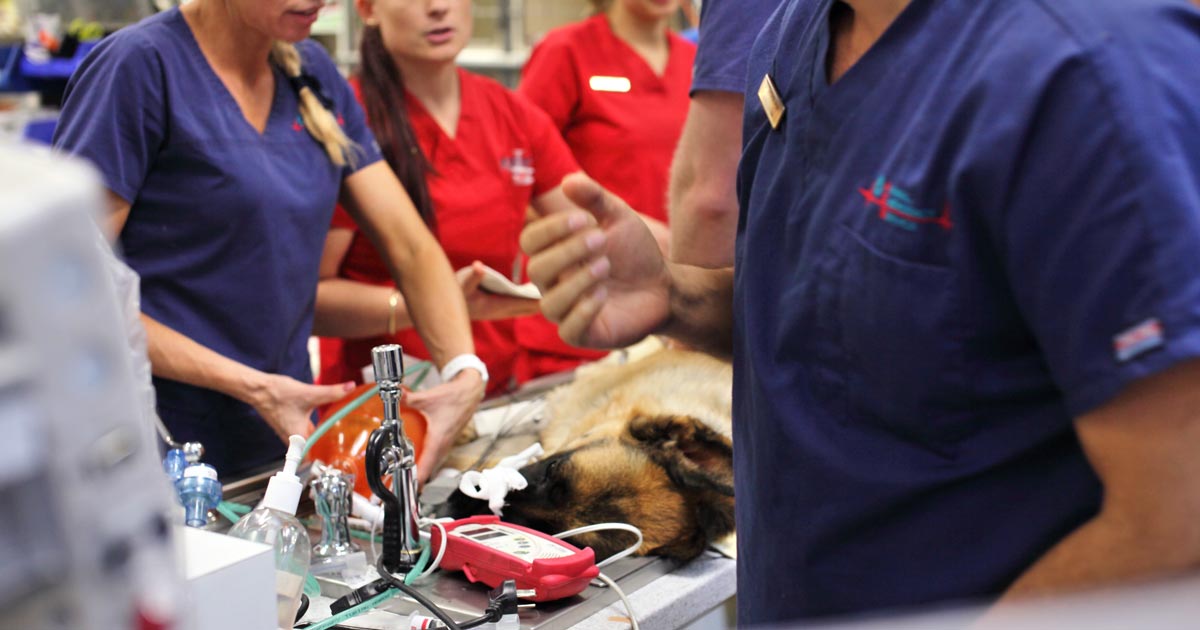
Hypoxia and hypercapnia have both been shown to reduce success in resuscitating human and veterinary patients – highlighting the importance of airway access and ventilation in the early phases of cardiopulmonary resuscitation (CPR).
Although the benefit of early ventilation – within the initial minutes of CPR – is not clear in animals, it appears to be beneficial to human paediatric patients who have arrested from causes other than those of primary cardiac origin.
This could be applicable to veterinary patients, whose main cause of cardiopulmonary arrest is usually from non-cardiac causes.
Airway and ventilation
Obtaining airway access should occur as soon after starting cardiac compressions as possible.
When immediate endotracheal intubation cannot be achieved, mouth-to-snout ventilation, or bag-mask ventilation, should be performed. Although evidence on these two methods in veterinary medicine is only anecdotal, both methods appear to be effective.
Mouth-to-snout ventilation is most effective when performed on long-snouted breeds. This is achieved by placing the mouth over the entire nose area and closing the dog’s mouth with one or both hands to create a seal, preventing air leakage.
This method is likely less effective in brachycephalic breeds and cats, due to their facial structures. Tight-fitting face masks are necessary to achieve an airtight seal; species-specific masks are required for this to work.
Cardiac to ventilation ratio
For both aforementioned methods, cardiac compression to ventilation ratio should be given at 30:2 – 2 breaths for every 30 chest compressions.
While it is theoretically advantageous to renew the breaths during compressions, this interruption to cardiac compression will reduce the effective cardiac compression pressure.
The human basic life support recommendation is to give the two breaths before commencing cardiac compressions. This is to reduce the chances of affecting cardiac compression pressures and overall confusion on ventilation delivery. This compression to ventilation ratio is different to that when endotracheal intubation is used.
Endotracheal intubation
Endotracheal intubation is the desired form of airway access, as it allows oxygen supplementation, better tidal volume control and inspiratory time management.
Breaths should be delivered at 10 breaths per minute. During CPR, 100% oxygen should always be used. A tidal volume of 10ml/kg should be delivered, with an inspiratory time of one second. Inspiratory time longer than this will create a persistent positive intrathoracic pressure, reducing venous return to the heart.
Hyperventilation is as detrimental as hypoventilation – both reduce the success rates of CPR.
Equipment to aid monitoring cardiac compressions and ventilation efficacy will be discussed in part four.
Mouth-to-snout ventilation/bag-mask ventilation:
- 30:2 (compression to ventilation)
Endotracheal intubation:
- 10 breaths per minute
- 10ml/kg tidal volume
- one second inspiratory time
- use 100% oxygen

Leave a Reply